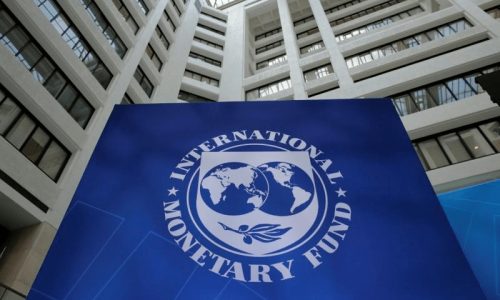A Look at Millennium-Era Glory Before Pakistan Existed
Dr. Buragadda Srinath
If Donald Trump indeed said something along the lines of “after 1000 years, a solution can be arrived at to the Kashmir issue,” it was likely a metaphorical way of referencing how long and intractable the conflict has been—or feels. He is known for hyperbolic and loosely constructed statements that leave room for broad interpretation.
In reality, the Kashmir conflict, as a modern geopolitical issue, is only about 75 years old, having arisen after the Partition of British India in 1947. A thousand years ago—around 1025 CE—there was no Pakistan, no India in the modern nation-state sense, and certainly no “Kashmir issue” as we understand it today. The Indian subcontinent was then a vast civilizational entity made up of numerous kingdoms, spiritual traditions, and cultural exchanges. That era was the age of a grand Akhand Bharat.
Akhand Bharat: A Civilizational Concept, Not a Political Blueprint
“Akhand Bharat” (Undivided India) is a cultural and ideological concept primarily championed by Hindu nationalist organizations such as the Rashtriya Swayamsevak Sangh (RSS). It envisions a unified region encompassing present-day India, Pakistan, and Bangladesh—and sometimes extending to Nepal, Bhutan, Afghanistan, Myanmar, and Sri Lanka.
Crucially, this idea is not grounded in present-day political boundaries but rather in a shared civilizational, spiritual, and cultural heritage that long predates colonial partitions. Historically, the subcontinent was periodically unified under various empires—the Maurya Empire under Ashoka, the Gupta Empire, even the Mughal Empire—but always with significant regional autonomy and diversity.
Spiritually and philosophically, the region shared languages like Sanskrit and Pali, and faith systems like Hinduism, Buddhism, and Jainism, with ideas and teachings moving freely across what are now international borders.
The Magnificent Akhand Bharat of a Millennium Ago
Today, the idea of Akhand Bharat is re-entering public discourse—but what does it truly mean?
A thousand years ago, the land we now call India or Bharat was not a patchwork of isolated states, but a civilizational continuum spanning vast regions of South Asia. This was Akhand Bharat: an undivided India bound not just by geography, but by a shared cultural and spiritual ethos.
From Gandhara in the northwest to Kalinga in the east, and from Kashmir to Kanyakumari, the subcontinent was united by networks of trade, philosophy, language, and religion. Though political boundaries shifted and empires rose and fell, the civilizational identity of Bharat remained coherent—held together by Sanskritic knowledge systems, dharmic philosophies, and a worldview rooted in coexistence and pluralism.
Akhand Bharat is not merely a political vision—it is a civilizational memory. A memory of unity, harmony, and a collective identity disrupted only in recent centuries. Revisiting this idea today is not about revanchist nationalism, but about reawakening a deeper sense of our shared heritage and civilizational context.
India’s Last 1,000 Years: A Legacy of Intellectual Flourishing
While colonial narratives have long portrayed India’s last millennium as one of decline and stagnation, modern research tells a different story—one of enduring cultural, scientific, and intellectual vitality.

- Mathematics and Astronomy: Indian scholars like Bhaskara II (12th century) authored works such as Lilavati and Siddhanta Shiromani, advancing algebra, arithmetic, and astronomical calculations.
- Medicine and Ayurveda: Traditional systems like Ayurveda continued to evolve, building on foundational texts like the Charaka Samhita and Sushruta Samhita.
- Education and Knowledge Centers: Universities like Nalanda and Vikramshila stood as global centers of Buddhist and Hindu learning until they were destroyed by invaders like Bakhtiyar Khilji.
These examples underscore a vibrant intellectual landscape that flourished long before colonial domination and persisted in many forms despite it.
What Did Trump Likely Mean?
If Trump did refer to a “1,000-year” timeline for resolving the Kashmir dispute, it was likely rhetorical exaggeration. He probably meant to emphasize the seemingly endless and complex nature of the conflict. Does this mean Trump supports the idea of Akhand Bharat? That’s unlikely. He has never explicitly endorsed such ideological visions.
Still, the notion of Akhand Bharat finds relevance in broader regional discussions. Proponents argue that the fragmentation of the Indian subcontinent has led to decades of political instability, extremism, and suffering, particularly in Pakistan and Bangladesh. Many citizens in those countries have found themselves trapped between authoritarian regimes and radical militias.
As one commentator put it: “The people of Pakistan and Bangladesh deserve peace, prosperity, and freedom from fear. If a unified South Asian vision can provide that, it deserves serious consideration.”
Trump’s “1000-year conflict” remark may well be interpreted by some as an acknowledgment of the deep-rooted challenges in the region, but also as a sign that the international community sees value in exploring long-term, sustainable solutions.
Akhand Bharat: Cultural Reintegration, Not Political Expansion
While critics often deride the Akhand Bharat idea as unrealistic or jingoistic, its proponents insist that it is not about political conquest or territorial aggrandizement. Rather, it is a vision of cultural reintegration, economic collaboration, and shared peace among historically connected nations.
In that light, Akhand Bharat is not a throwback fantasy—it is a forward-looking call to rediscover common ground. Not to redraw borders, but to remove the artificial walls built by colonialism and perpetuated by political agendas.






